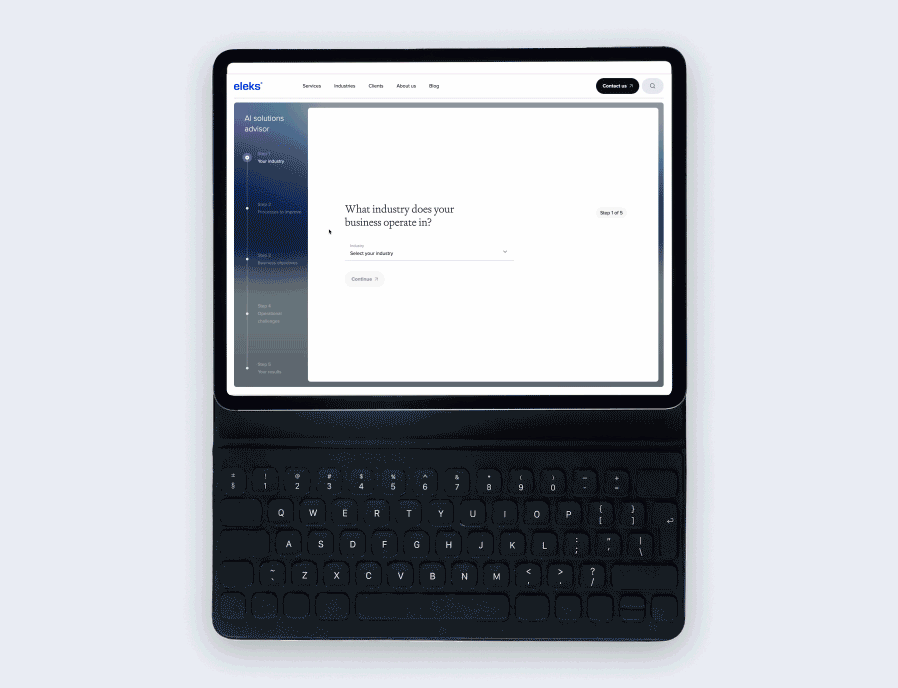
What is agentic AI?
Agentic AI is a big step forward from traditional AI systems. Agentic AI operates more autonomously and efficiently. AI agents are systems that understand and answer questions on their own, without the need for human intervention. AI agents can take actions, conduct research, and perform prescriptive analysis compared to conversational AI solutions and AI assistants. They typically rely on the large transformers and natural language generation (NLG) or multimodal generation possibilities, both with underlying analytical, execution and other supportive systems, to do a variety of tasks.
Agentic AI stands out for its ability to reason, plan, and achieve goals on its own. Instead of just following orders, these systems can:
- Absorb data from their environment
- Process this information through complex reasoning
- Act on their analysis without constant human direction
- Use past experiences to improve future performance
In supply chain management, for instance, an intelligent agent might do more than just track shipments. Based on what it believes demand will be, it can monitor inventory levels in real-time, project when stocks might run low, and even make orders with suppliers entirely on its own. Should a delay arise, an AI agent can intervene with recommendations for other suppliers or paths to maintain operations, therefore keeping management informed and enabling them to make decisions.
- While generative AI waits for instructions, agentic AI goes one step further and not only uses instructions, but also actively perceives, reasons, acts, and learns without constant human input.
- "Superagents" and multi-agent workflows will enable AI systems to coordinate autonomously, handling complex tasks that once required human oversight.
- Organisations that fail to distinguish between different AI agent types and map them to their business goals risk implementing the wrong architecture, wasting significant investments and operational costs.
Agentic AI vs. Generative AI
Generative AI and AI agents are distinct technologies with different capabilities. Generative AI systems, like GPT o3‑mini and Gemini 2.0 Flash, create text, images, audio, or video content based on specific prompts. They react to each interaction one at a time, only doing what you ask them to do and not taking the lead.
On the other hand, AI agents solve problems independently and take initiative. They can break down complex tasks into smaller steps, decide what to do, and keep track of information over time. AI agents work actively to complete tasks with little human help.
These capabilities are often used together with AI agents using generative AI as a tool. For example, a reflex AI agent might use generative AI to write an email as part of a larger project.
Types of AI agents
Simple reflex agents
The most basic form of AI agents, reflex agents, respond to specific situations based on predetermined rules. They respond quickly to specific conditions and react immediately to environmental changes using advanced non-linear instructions.
Model-based reflex agents
Model-based reflex agents are useful in complex industrial settings where staying aware of the situation is key to performing well. Self-driving cars are a good example of these agents. They constantly update their understanding of the road and obstacles so they can drive safely. Unlike simple reflex agents, they consider the context, past data and environmental factors when making decisions.
Goal-based agents
Designed to achieve specific objectives, goal-based agents excel at tasks requiring planning and reasoning. They're particularly valuable in natural language processing applications and robotics, where they can write reports or control mechanical systems with precision. These agents evaluate different options based on the likelihood of achieving the defined goal.
Utility-based agents
These agents use smart prediction tools to figure out what action will bring the best results based on certain conditions. Those AI agents can help you sort out what's most important when you've got a lot going on and make choices that consider both the quick wins and the long-term effects.
Learning agents
Through reinforcement learning, these agents keep getting better based on feedback and experience. What makes them unique is their ability to improve over time without explicit reprogramming. These AI agents operate more effectively by analysing their performance and making updates based on their findings.
Hierarchical agents
Hierarchical agents are advanced systems where multiple AI agents work together at organised levels to handle various subtasks. They can handle complicated tasks well by splitting up the work among specialised parts, working together like an organised team of AI experts.
How does agentic AI work?
To understand agentic AI's transformative potential, we need to examine the sophisticated mechanisms that power these systems. Unlike traditional AI, which simply responds to inputs, agentic AI employs a dynamic, multi-layered approach to problem-solving. In this context, LLMOps provides the operational backbone for agentic AI, enabling organizations to reliably manage, monitor, and scale the large language models that underpin these multi-layered decision-making systems.
The four-step process that drives AI agent functionality
The first step is perception–collecting diverse high-quality data to understand the environment. This could include:
- User inputs and queries
- Database information
- Sensor readings
- Online resources & deep research functionality
- Historical data
Think of this step as an AI detective meticulously gathering clues before attempting to solve a case. The quality and comprehensiveness of collected data directly impact the agent's effectiveness.
At the core of every AI agent is its reasoning capability, typically powered by large language models (LLMs). This acts as the "brain" that forms the foundation of its AI capabilities:
- Analyses the collected data
- Identifies patterns and relationships
- Evaluates potential solutions
- Makes decisions based on objectives
A critical enhancement to this reasoning process is Retrieval Augmented Generation (RAG). This technology gives the LLM access to external information sources, essentially providing a vast knowledge library that the AI can reference to supplement its built-in knowledge.
During this reasoning phase, the intelligent agent might:
- Break down complex tasks into manageable components
- Formulate multiple potential approaches
- Evaluate each approach against the defined objectives
- Select the optimal strategy based on available information
Once the reasoning process is complete, the agent takes action. Depending on its capabilities and authorisation level, these actions might include:
- Generating responses or content
- Executing commands in software systems
- Initiating transactions
- Controlling physical devices or robots
- Communicating with users or other systems
The action phase transforms the agent's reasoning into tangible outcomes. The effectiveness of these actions is directly tied to the quality of the previous perception and reasoning steps.
What truly distinguishes agentic AI is its ability to learn and improve over time through a continuous feedback loop. After each action, the agent:
- Evaluate the outcomes against the intended goals
- Identifies successful strategies and failure points
- Updates its internal models accordingly
- Refines its approach for future similar scenarios
This learning process makes agentic AI increasingly effective with each interaction. Unlike static systems that remain unchanged, agentic AI evolves based on experience, becoming more personalized and accurate over time.
Agentic workflows
In practical applications, agentic AI systems employ various workflow patterns to solve complex problems.
| Workflow | Description |
|---|---|
| Prompt chaining | When dealing with tasks that have several steps, the agent breaks it down into a series of steps. For example, to create and translate marketing copy, it first generates the content in the primary language before triggering translation into other languages. |
| Execution/acting | The agent activates and runs necessary software components, manages API communications (both sending requests and handling responses), performs compilation processes when required, and executes other programmatic functions. |
| Routing | When handling varied requests, the agent classifies inputs and directs them to specialised sub-agents or processes. A customer service agent could send billing questions to the finance team, or a hierarchical or MAS agent focusing on the financial sector, and then pass tech problems to support. |
| Parallelisation | To work more efficiently, agents can handle several tasks at the same time. This might involve generating several creative concepts at once or analysing multiple data streams in parallel. |
| Orchestration | In complex workflows, there's usually a main "orchestrator" LLM acting like a manager, handing out tasks to different "worker" LLMs depending on what they're good at. |
| Evaluation and optimisation | Some systems have special parts that check the results and give feedback to keep improving things, such as having an internal quality control setup. |
Metacognition in AI agents
The most advanced agentic AI is developing metacognitive abilities, which allow them to "think about their thinking." This capability enables:
- Self-evaluation of problem-solving approaches
- Recognition of knowledge gaps or reasoning errors
- Adaptation based on past successes and failures
- Continuous refinement of internal models
A metacognitive travel planning agent, for instance, doesn't just recommend destinations based on preferences it learns from feedback ("that hotel was too noisy") to refine its understanding of your preferences over time. If it suggests a fully booked hotel, it recognises this error and adjusts its verification process for future recommendations.
Key business benefits of AI agents
Agent AI represents intelligent automation beyond typical chatbots or copilots. It doesn't just sit around waiting for you to tell it what to do. Instead, it decides what to do based on your goals.
AI agents combined with spatial computing will create systems that naturally understand and respond to our gestures, speech, and contextual cues, eliminating the need for specialised commands.
AI agents can enhance operational efficiency, enabling faster response time and eliminating unnecessary steps or idle periods. Moreover, superagents will take care of more effective interactions of AI solutions.
Agentic AI can connect with your existing systems to collect and analyse customer interaction data, identifying patterns and trends. With these insights, companies can make smarter decisions about products, services, and strategies and keep up with data protection rules.
Application of intelligent agents across industries
AI agents in healthcare
Agentic AI is making significant inroads in healthcare software, where they're improving both operational efficiency and patient outcomes:
- Data retrieval and report creation. AI agents can work on extracting information from clinical datasets and generate reports, allowing medical personnel to focus more on patient care while retaining complete, accurate records.
- Improving data quality. AI agents can enhance healthcare data quality by applying advanced algorithms to denoise medical images and generate high-resolution reconstructions from lower-quality scans, enabling clinicians to make more accurate diagnoses by seeing anatomical structures and pathological features more clearly.
- Clinical workflow optimisation. AI agents streamline administrative tasks, predict supply needs, and optimise scheduling, allowing healthcare professionals to focus more time on patient care.
AI agents in finance
Financial institutions are deploying AI agents for numerous critical functions of business operations.
- Risk management. Agentic AI solutions keep an eye on transactions and market factors all the time to spot possible risks before they happen.
- Personalised financial advisors. By analysing consumer data to detect spending, saving, and investing trends, AI agents can provide individualised financial advice.
- Compliance monitoring. AI agents track regulatory changes and ensure that all activities remain within legal guidelines, reducing compliance risks.
AI agents in manufacturing
The manufacturing sector is experiencing a profound transformation through agentic AI:
- Production line optimisation. AI agents analyse production processes to identify bottlenecks and inefficiencies, improving outputs.
- Resource coordination. Agentic AI optimises the allocation of raw materials, energy, and human resources throughout the manufacturing process.
- Generative design in product prototyping. Through autonomous generation of design alternatives with optimal material selections and manufacturing recommendations, AI agents can speed up product development.
AI agents in retail
The retail sector is using AI agents to enhance both operational efficiency and customer experience:
- Orchestrator for back-office activities. Creating a chain of LLM-based agents to automate corporate activities, such as ordering, communication and hiring, lowers operating costs.
- Store operations. From optimising staff scheduling to monitoring store layouts for efficiency, AI agents are transforming physical retail spaces.
- Supply chain optimisation. AI streamlines procurement processes, automates contract management, and enhances communication between stakeholders throughout the retail supply chain.

Future of agentic AI systems
We're likely to see agentic AI evolve with new trends and innovations, especially as generative AI becomes more popular. Agentic AI will become more widespread, with applications in various industries and domains. Stanford's Human-Centered AI Institute assumes we'll see more AI agents in research. They also think there'll be less regulation in the US and a big move from using single AI models to systems where different AI agents team up.
Even though it's getting easier to develop your AI agents, there are still many questions about how to set them up, what rules we'll need, and the ethical issues that could affect how quickly they're adopted. Big and small companies might soon get better access to agent-based systems, but their success will hinge on how we integrate them into our daily routines and monitor their performance with the help of LLMops solutions.
Here are more insights on what to expect as described in the ELEKS assessment of 2025 technology trends:
Superagents
Superagents, also known as advanced multiagents, represent the next step in agentic AI development. These top-tier AI coordinators will improve how AI systems interact and create new AI ecosystems in various industries.
Increased autonomy
Agentic AI's gonna do more than just handle one-off tasks. Instead, we'll see different AI systems teaming up to tackle complex tasks, all without constant human intervention. AI agents are going to make independent decisions, and then experts can check what they did afterwards.
Multimodal capabilities
The mix of agents focused on various fields of study and object types (text, images, video, 3D...) will create more versatile systems. For example, an AI could look at what's around it, understand spoken instructions in different languages, and respond just like we do when we use our eyes, ears, and voice every day.
Integration with spatial computing
Mixing AI agents with spatial computing is going to change the way we use technology by letting systems get a better grasp of our natural behaviours and what we mean to do. Instead of teaching us complex programming commands, these systems will just pick up on our usual gestures, speech, and context to get digital tasks done.
Conclusions
Companies across sectors find themselves at a turning point as agentic AI develops. From generative AI to autonomous AI agents, the change in how companies use the technology marks more than a small step forward. Rising autonomy, superagent development, multimodal capabilities, and spatial computing integration allow us to see early phases of AI systems capable of really improving human decision-making.
Applications in retail, manufacturing, finance, and healthcare show that this technology is not theoretical but provides real advantages. Knowing the differences between various agent types and using the correct architecture for particular problems will be vital for companies trying to stay competitive. Companies that use AI agents in their activities will be more suited to maximise resources, improve consumer experiences, and generate new business models.

FAQs
Generative AI creates content such as text, images, audio, or video based on specific prompts. Meanwhile, AI agents solve problems independently and take initiative, but 90% of modern AI agents are based on multimodal GenAI methods.
ChatGPT can be considered primarily a generative AI rather than a fully agentic AI. While ChatGPT can generate text responses to prompts, it doesn't independently perceive environments, set its own goals, or take autonomous actions to achieve objectives without human direction.
Non-agentic AI responds to specific inputs with predetermined outputs and requires explicit instructions for each task. AI agents, while requiring instructions at least for the first time, operate with greater autonomy. They can reason through problems, plan steps to achieve goals and act without constant human direction.
Related Insights








Inconsistencies may occur.
The breadth of knowledge and understanding that ELEKS has within its walls allows us to leverage that expertise to make superior deliverables for our customers. When you work with ELEKS, you are working with the top 1% of the aptitude and engineering excellence of the whole country.

Right from the start, we really liked ELEKS’ commitment and engagement. They came to us with their best people to try to understand our context, our business idea, and developed the first prototype with us. They were very professional and very customer oriented. I think, without ELEKS it probably would not have been possible to have such a successful product in such a short period of time.

ELEKS has been involved in the development of a number of our consumer-facing websites and mobile applications that allow our customers to easily track their shipments, get the information they need as well as stay in touch with us. We’ve appreciated the level of ELEKS’ expertise, responsiveness and attention to details.

